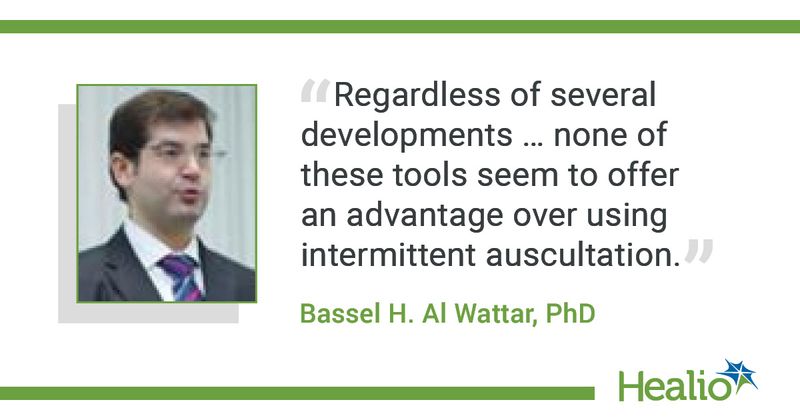Intermittent auscultation may reduce risk for emergency cesarean delivery
Click Here to Manage Email Alerts
Patients monitored with intermittent auscultation vs. other fetal surveillance types had a lower risk for emergency cesarean delivery and did not have an increased risk for adverse neonatal or maternal outcomes, a meta-analysis found.
Bassel H. Al Wattar, PhD, of Warwick Medical School in the U.K., told Healio Primary Care that although cardiotocography “offers more information continuously on the fetal heart rate” and “continues to be the most widely used and recommended” fetal surveillance tool during labor worldwide, “its actual value remains debatable.”

Al Wattar and colleagues assessed the effectiveness of different types of fetal surveillance — including intermittent auscultation with Pinard stethoscope/handheld Doppler; computerized cardiotocography; and cardiotocography with fetal scalp lactate, fetal scalp pH analysis, fetal pulse oximetry and fetal heart electrocardiogram; as well as their combinations — in a meta-analysis of 33 trials that contained data on 118,863 patients. The study’s primary outcome measure was incidence of emergency cesarean delivery.
The data showed a reduced risk for cesarean delivery with intermittent auscultation vs. cardiotocography (RR = 0.83; 95% CI, 0.72-0.97), cardiotocography with fetal scalp pH analysis (RR = 0.71; 95% CI, 0.63–0.80), cardiotocography with fetal scalp lactate (RR = 0.77; 95% CI, 0.64–0.92), cardiotocography with fetal pulse oximetry (RR = 0.75; 95% CI, 0.65–0.87) and cardiotocography with fetal pulse oximetry and fetal blood pH sampling (RR = 0.81; 95% CI, 0.67–0.99).
The researchers also found a risk ratio of 1.21 (95% CI, 1.04-1.42) for computer-aided cardiotocography with fetal scalp blood pH sampling. However, they wrote that there was no reduced risk for cesarean delivery between intermittent auscultation vs. cardiotocography with fetal heart ECG and fetal scalp blood pH sampling.
According to the researchers, none of the evaluated methods was linked to a reduced risk for neonatal acidemia, neonatal unit admissions, Apgar scores or perinatal death.
“Critically, we are realizing that regardless of several developments in the tools used to monitor babies in labor over the last 30 years, none of these tools seem to offer an advantage over using intermittent auscultation,” Al Wattar said.
He also said the findings indicate a “need to invest more in clinical research to develop novel monitoring tools that could help to reduce the risks in labor while also reducing the need for emergency cesarean sections,” which he added is “particularly relevant to high-risk pregnancies where research is needed to identify useful monitoring tools that enable safe childbirth for those mothers and their babies.”

